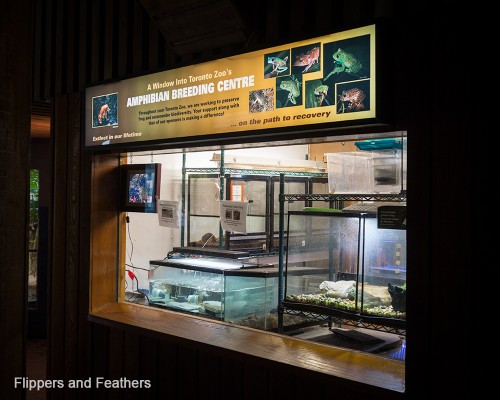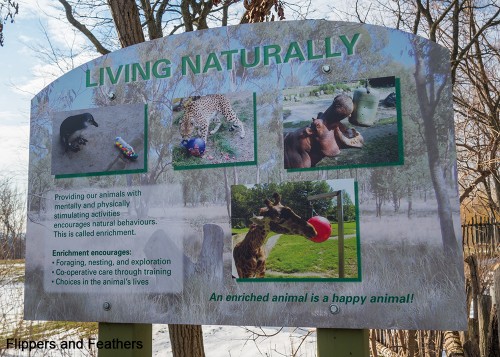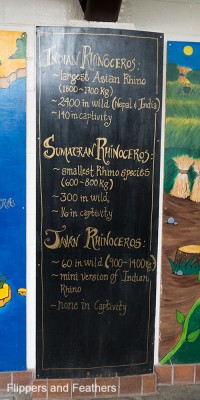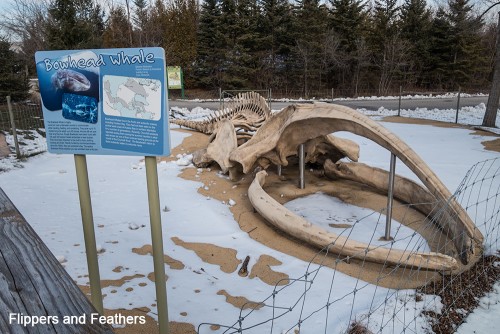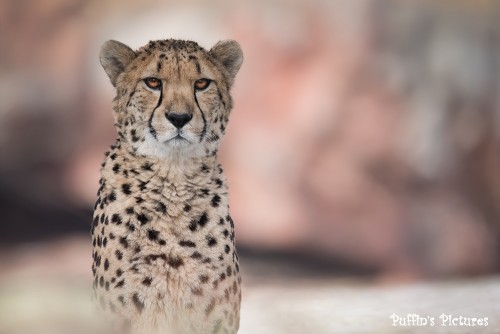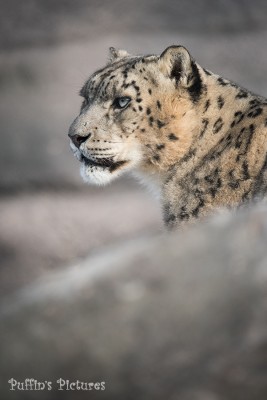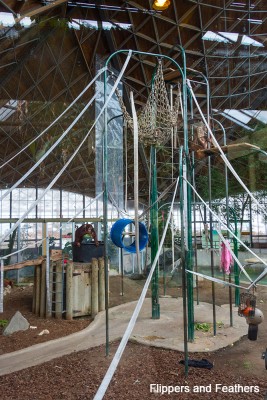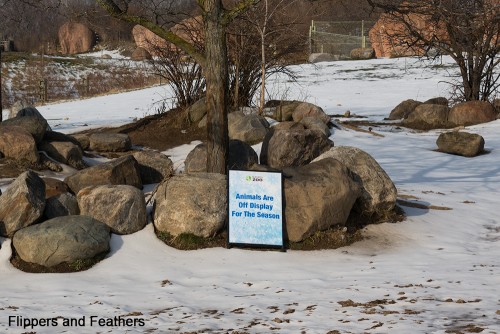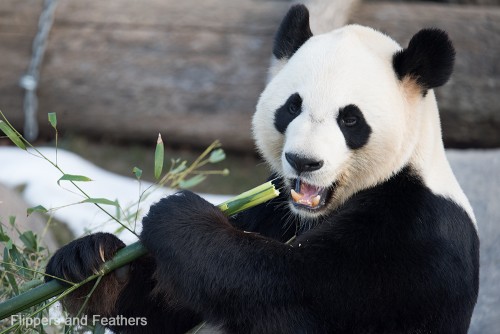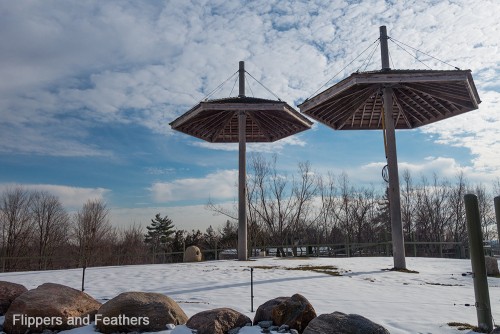The Toronto Zoo, which was born out of the old Riverdale Zoo and officially opened as a new venture in 1974, is Canada’s largest zoo. It is currently home to over 5000 animals from over 450 species.
The Toronto Zoo is incredibly active in global conservation efforts, which includes the breeding of endangered species – most notably they were the first zoo to champion the captive breeding of Black Footed Ferrets, with the intent of re-releasing them into Saskatchewan where they were extinct in the wild. Evidence of their various conservation efforts can be found throughout the zoo in well-marked signs and exhibits.
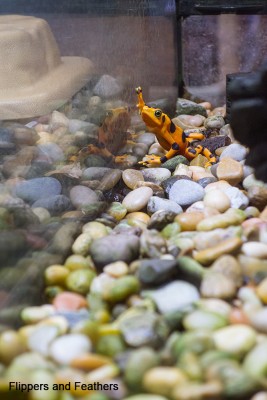
Panamanian Golden Frogs are believed to be extinct in the wild. Zoos serve as an ark to this species with the hope they can be re-introduced to the wild someday.
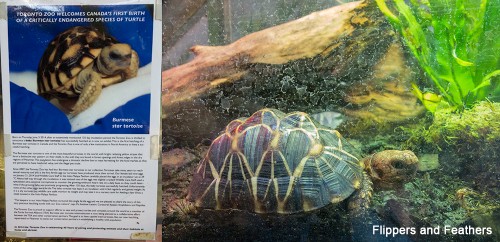
The Burmese Star Tortoise is a critically endangered species now being bred in Canada by the Toronto Zoo
In general the habitats themselves are spacious, attempt to be naturalistic, and have ample enrichment opportunities. The zoo has signage highlighting different kids of enrichment that they provide for the animals, as well as (most importantly) information about their natural habitats and the threats they face in the wild.
Notable highlights are the snow leopards and cheetahs. Toronto Zoo is the only facility I have visited where these beautiful cats have been up and active, and indeed it was through visiting this specific zoo that I was able to gain an enhanced appreciation for them.
The orangutans have been another highlight over the years. Although Adelaide Zoo’s (review coming soon!) orangutan habitat is the most naturalistic and aesthetically pleasing, the orangutans at the Toronto Zoo always seem to be getting up to something. I vividly remember the first time I saw this species — which happened to be at this zoo — when I was perhaps 10. My dad pointed out their various behaviours while comparing them to humans. More accurately, to teenagers as one chillaxed on a raised platform while throwing food scraps to the ground. A few years ago I saw a young one having a ball as he ran around the habitat with a burlap sack over his head.
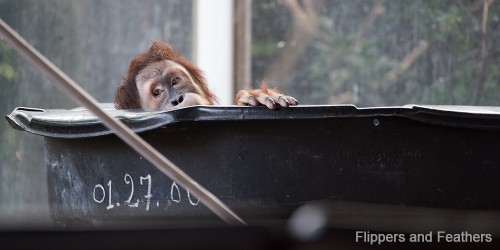
There were two playing in this tub, each poking their heads out briefly before throwing a tarp back over themselves.
In November 2015 one of the Toronto Zoo’s polar bears gave birth. One cub died, and the other had to be taken into human care when it was discovered that the mother not producing milk. Apparently, the Vancouver Aquarium assisted in developing a special formula based on their expertise with seals and other Arctic species. Different facilities have their different strengths, and reputable ones work together sharing information for the greater good.
The downside of having visited in winter was a number of exhibits and all the eating establishments with the exception of an express Tim Hortons (where you can get drinks and little else) were closed, and outside of scheduled keeper talks there were no staff on hand to answer any questions one might have. I am told the zoo is a completely different place in the on-season. For a zoo to be as enjoyable and educational visit as it was in the off-season speaks volumes about the facility, and so the zoo itself was well worth a visit at any time of the year.
A side-note on The Toronto Zoo’s elephants.
The Toronto Zoo recently made headlines over the death of a critically endangered African elephant named Iringa. Prior to the transfer, the treatment of the elephants at the zoo… well, changes depending on who you ask. But they had been planning to upgrade the habitat. Animal Rights activists – who have been increasingly targeting any facility with elephants — had lobbied the City of Toronto to have the zoo’s elephants removed, citing unsuitable housing among their many standard complaints. The city bowed to the activists. Toronto Zoo staff insisted that the animals should be sent to another zoo with the expertise to care for them, but activists hate all zoos and instead the elephants were sent to PAWS Sanctuary, despite their questionable reputation. As a result, the Toronto Zoo lost its AZA accreditation, and the elephants’ condition quickly deteriorated due to lack of proper care.
Recently, the animals at PAWS were in danger of being killed by wildfire. Due to the facility’s lack of equipment and expertise in proper husbandry procedures, they were unable to get them out (and didn’t seem to be too interested in doing so anyway), and stubbornly refused all outside help. Luckily, none of the animals perished…this time.
It is a sad fact that animal rights activists want to cut off all connections to animals such as elephants. And they won’t stop there — there is no telling which iconic yet imperiled species will be next. With wild elephant numbers plummeting ever lower due to poaching, we should be encouraging more people to connect with this species, not taking away one of the best resources of doing so that we have.

